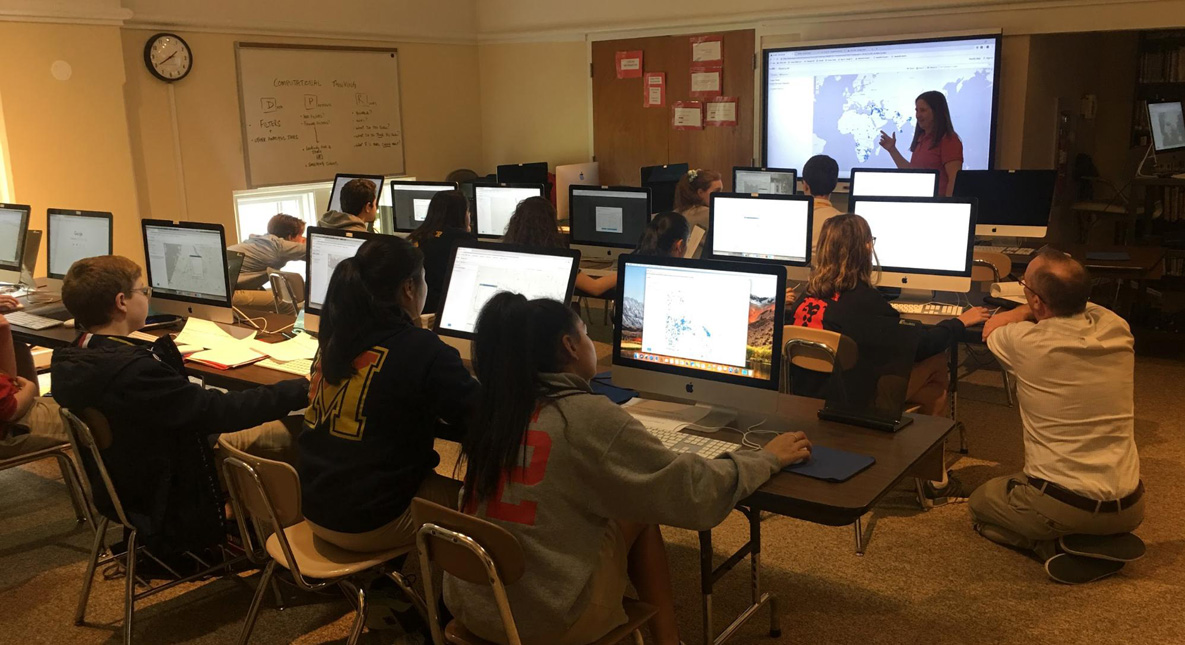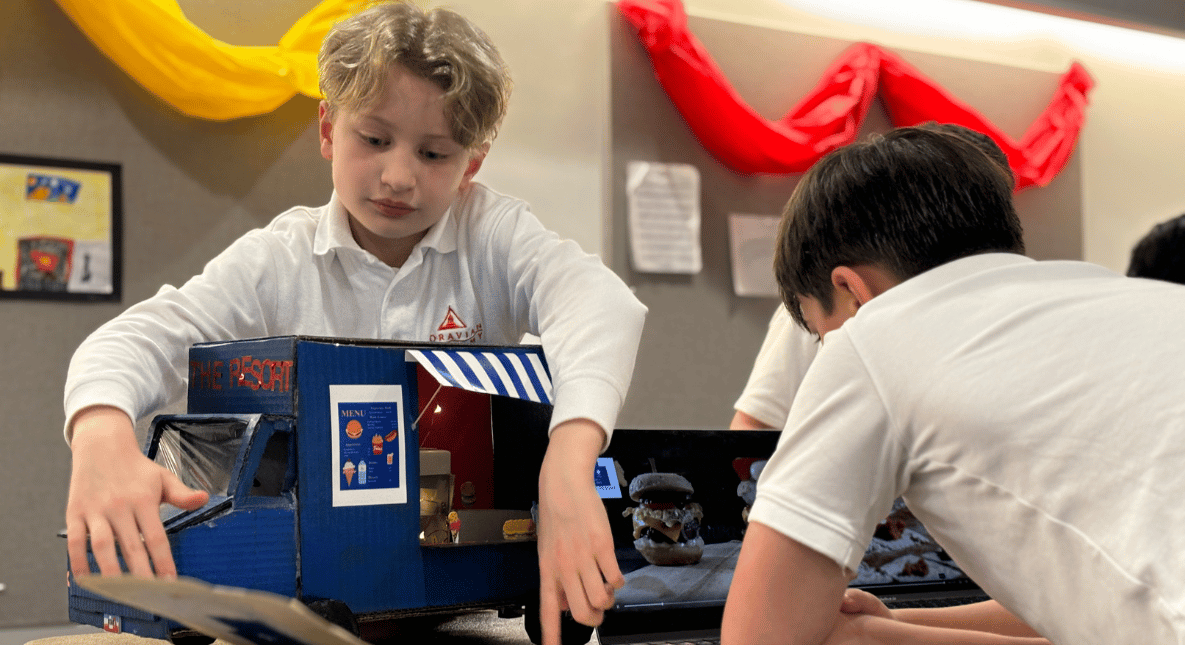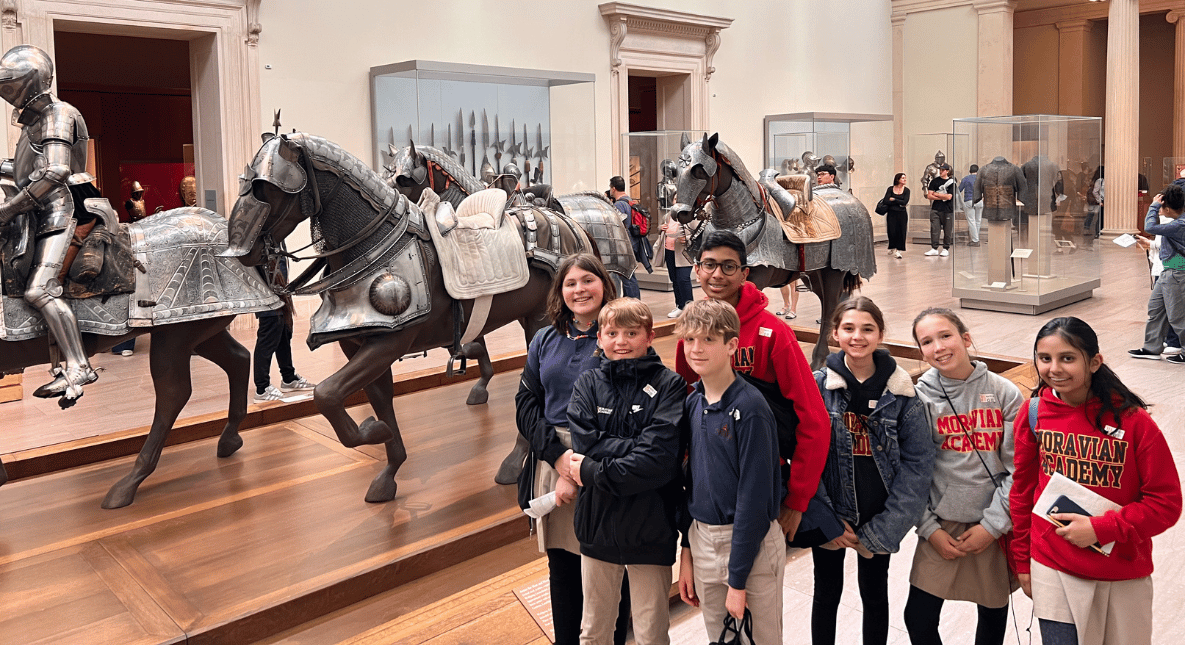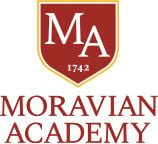How Computational Thinking Transforms Classroom Experiences
Julie Oltman Ph.D., who received her doctorate in Teaching, Learning, & Technology from Lehigh University in 2018, credits Moravian Academy with embracing innovative methods of learning.
“Moravian Academy has provided us with a sandbox,” said Dr. Oltman, who has two students (Jackson Oltman ‘22 and Joey Oltman ‘24) at the school. “The administration and faculty are open to new ideas, invested in learning for their students, and committed to challenging kids in a way that engages and encourages them to think beyond where they normally would.”
After success with creating several game-based learning activities in collaboration with our Lower School faculty in recent years, including the development of a colonial history game inspired by “Pokemon-Go!” for our second graders, Dr. Oltman has shifted gears. Along with her doctoral advisor Dr. Tom Hammond, Associate Professor at Lehigh University, she has been working to help integrate more computational thinking into our classrooms.
Computational thinking is a system of problem-solving skills used to find patterns and rules in data. This is a well-established concept in quantitative fields such as mathematics and computer science, but it also has great potential to be applied to other disciplines such as social studies, English, and global languages.
“Computational thinking provides the opportunity for students to investigate,” said Dr. Oltman. “In these student-centered activities, students are discovering knowledge with their own involvement as opposed to being told what data means. This is a critical skill for the 21st-century workforce.”
One computational thinking tool to help students apply computational thinking strategies is ArcGIS, an online geographic information tool used to compile geographic datasets into maps, which can then be manipulated and analyzed for patterns. This data can include a wide range of topics such as employment and other economic data, tracking rates of disease, climate data, and more.
Dr. Oltman and Dr. Hammond have partnered with Mr. David Walp, Grade 8 Social Studies teacher for three lessons over spanning the topics of international terrorism, Jim Crow demographics, and global water scarcity. Using GIS technology and database information, students were tasked with finding patterns and then conducting additional research to learn more. Examples of patterns that students discovered and explored on their own included events such as the Rwandan genocide in Africa, the Great Northward Migration in the United States following World War I, and the disparity of water access between urban and rural populations in certain countries.
“Working with Julie and Tom was a collaborative and equal-working partnership,” said Mr. Walp. “It was a great experience for the students and we are continuing to look for opportunities to incorporate additional computational thinking activities into the Social Studies curriculum.”
Together, Dr. Oltman and Dr. Hammond look forward to continuing partnerships with our Lower and Middle School faculty, and developing partnerships with our Upper School faculty to embed more innovative ways of learning into curriculums across subjects.
Read this article and other content in the Spring 2020 Moravian Academy Journal.


 myMA
myMA











